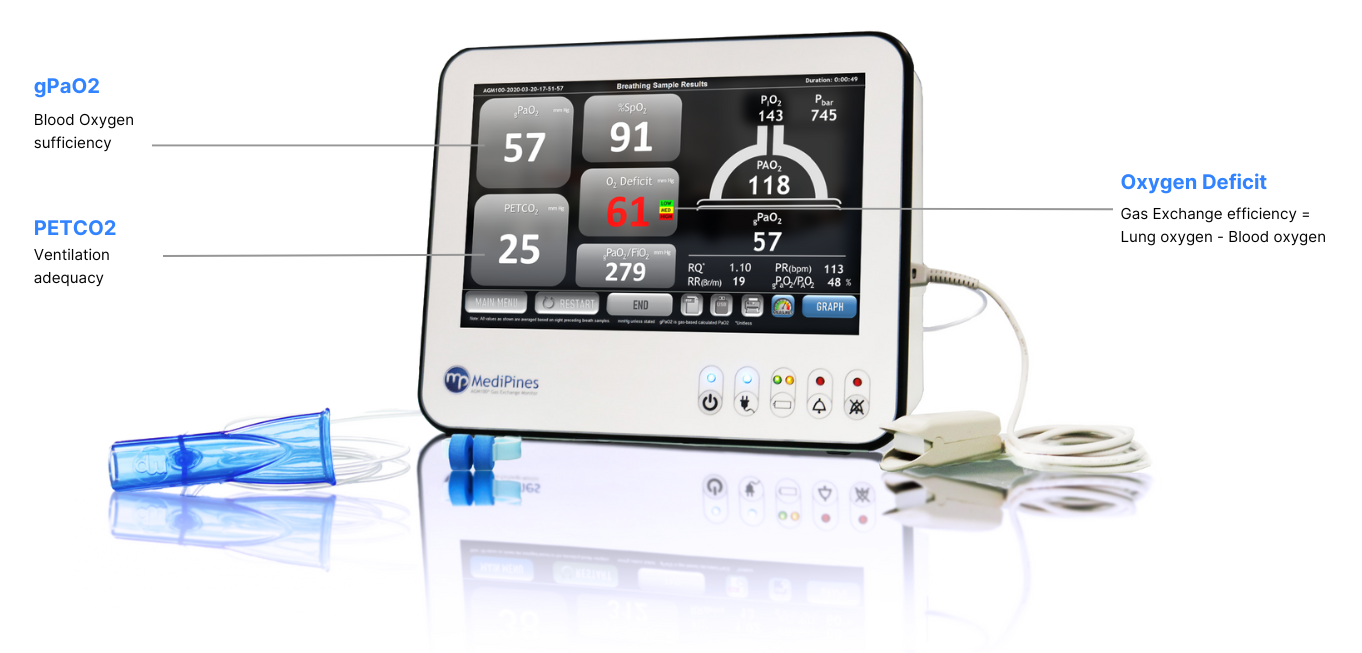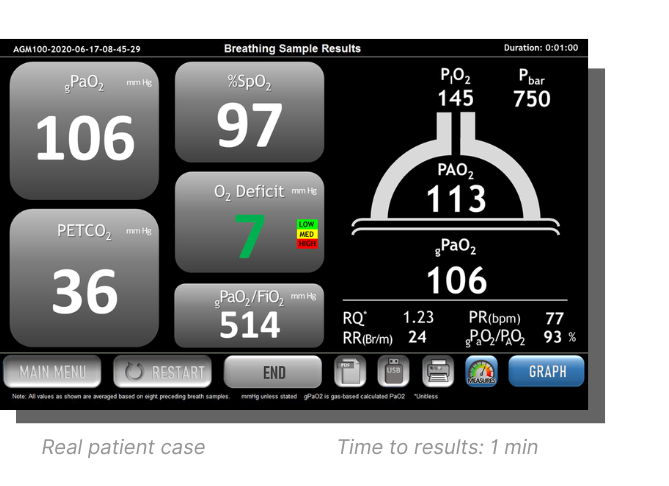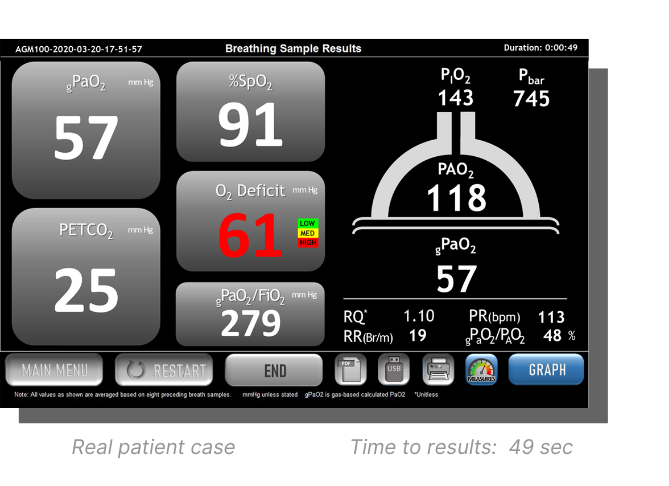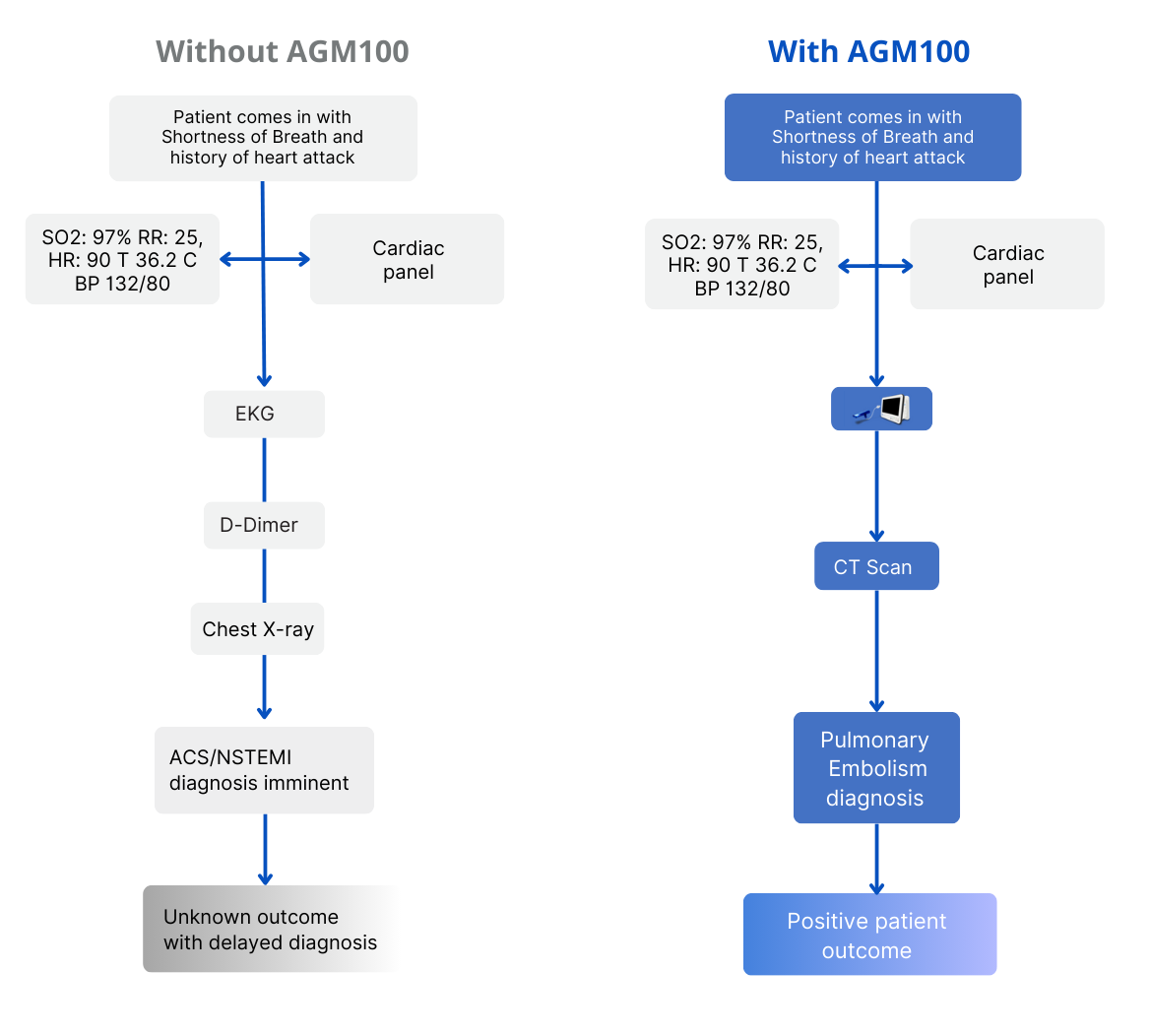What Physicians are Saying
“An Oxygen Deficit of 40 mmHg or above predicted a need for supplemental oxygen at some point during that hospital course with, essentially, 99% accuracy. The area under the curve of the receiver operating characteristic curve was 0.99.”
Medscape Emergency Medicine Interview
"We're measuring these patients in the ER as a form of triage, to determine what kind of care we're going to provide. And then once the patient is admitted, we're monitoring these patients at least twice a day, to trend their responses to care and therapies. So far, its been extremely successful. We’re intervening much quicker to find out what it is that's going on, and then treating them..."
Milwaukee Hospital Head of Respiratory
"With AGM100 alone, I can manage her... I'm not depending on my clinical impression, I'm depending on objective science now. I have tests to guide my clinical suspicion."
Ascension Affiliated Pulmonologist
.png?width=300&height=89&name=MP%20Logo_All-in-One_070820%20(1).png)











